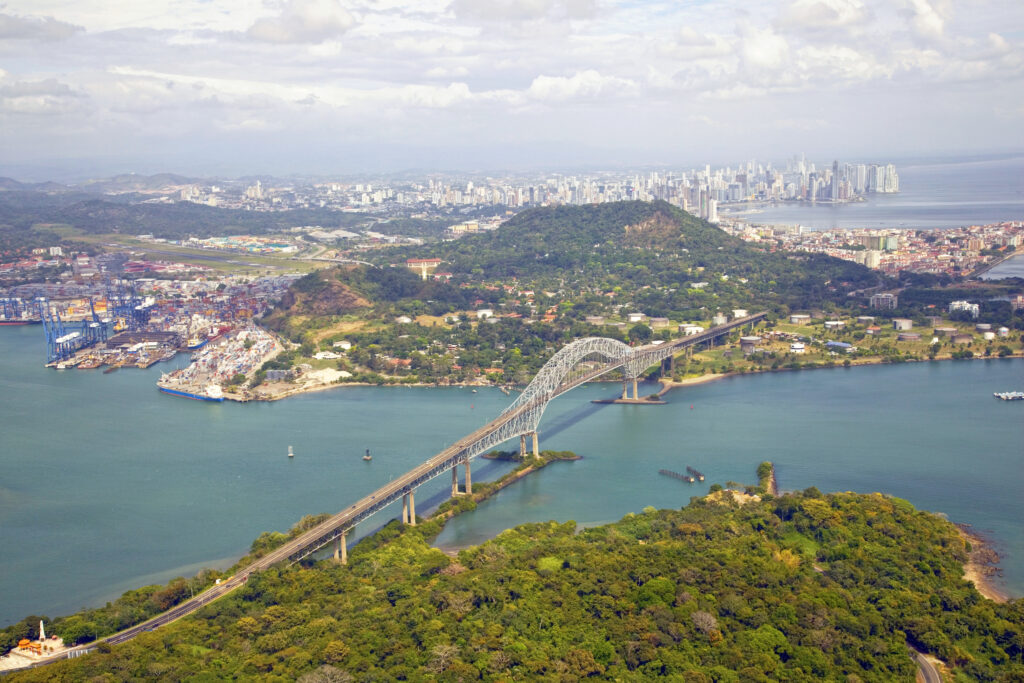Introduction
Panama, best known for its eponymous canal, has become a prime location for foreign businesses seeking to establish regional trade operations or manufacturing hubs, particularly in the electronics sector. Its central location, modern trade infrastructure, and economic and political stability have all contributed to its appeal as a place where businesses can thrive.
The Panama Canal: A Symbol of Global Trade
The Panama Canal, a majestic symbol of global trade, handles 5% of the world’s goods, with a record 13,785 ships from 160 countries passing through in 2019. Since the Panamanian government assumed control of this century-old engineering marvel in 1999, the focus has shifted to transforming the country from a mere transit point to a center of business and commerce.
Maritime Infrastructure: Creating a Regional Hub
Panama has become the maritime hub of the region, thanks to its thriving interoceanic canal and world-class seaport infrastructure on both the Pacific and Atlantic sides. In 2019, the port of Colon on the Atlantic coast of Panama handled the largest volume of cargo containers in Latin America and the Caribbean, while the entire port system managed a volume of 7.3 million TEUs. A railway also connects the Atlantic to the Pacific, functioning as a dry canal.
Air Connectivity: The Hub of the Americas
Panama’s strategic geographic position has enabled it to become an air hub, with Panama City’s Tocumen International Airport now considered the Hub of the Americas. The airport offers 90 connections to 34 countries, allowing for easy access to Central America, Colombia, Venezuela, Miami, and numerous U.S. and South American locations within just a few hours. This connectivity is a major advantage for companies with offices in different parts of the continent, as executives can quickly travel between markets directly from Panama.
Digital Connectivity: A Robust Infrastructure
Panama has also emerged as a hub for digital connectivity, with seven submarine fiber optic cables converging in the country, including Google’s Curie cable. This digital highway handles 100% of the regional traffic, 97% of international voice traffic, and 90% of electronic data transmission, offering virtually unlimited bandwidth and guaranteeing a robust digital infrastructure for Panama.
Boosting Panama’s Competitive Edge
Panama’s special economic regimes, such as the Colon Free Zone, the Panama Pacifico Special Economic Zone, and the City of Knowledge, provide incentives and adaptable benefits that complement the country’s natural advantages. These zones are designed to accommodate various economic activities, including research and development, logistics and distribution, and shared services’ regional operations. The success of these special economic regimes contributes to Panama’s status as a competitive destination for international manufacturing and logistics companies.
Universal Solar: A Testament to Panama’s Manufacturing Potential
Arizona-based solar module provider Universal Solar recently announced plans to build a 600 MW PV panel manufacturing facility in the Colón Logistics Park in Colón, Panama. The facility, which is expected to begin production in the fourth quarter of 2022, underscores Panama’s growing attractiveness as a manufacturing hub in Central America.
Major Companies in Panama’s Electronics Manufacturing Industry
Panama’s electronics manufacturing industry hosts several prominent global companies, including Samsung Electronics, Panasonic, Signify, ABB, Medtronic, Honda, BMW, WEG, and Philips Lighting. These companies contribute to the country’s manufacturing employment, which currently supports 141,842 workers.
Conclusion
Panama’s electronics manufacturing industry is poised for significant growth, bolstered by the country’s strategic location, pro-business policies, and existing special economic regimes. As more multinational companies recognize the advantages of operating in Panama, the country’s electronics manufacturing sector is expected to become an increasingly influential player in

